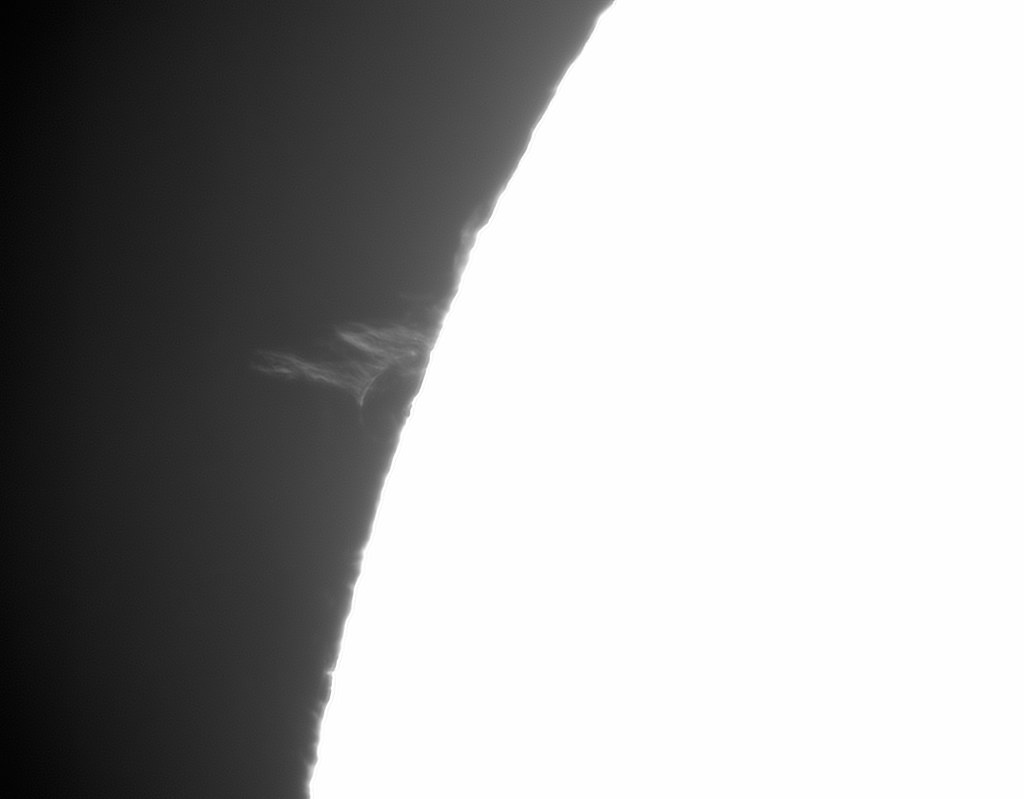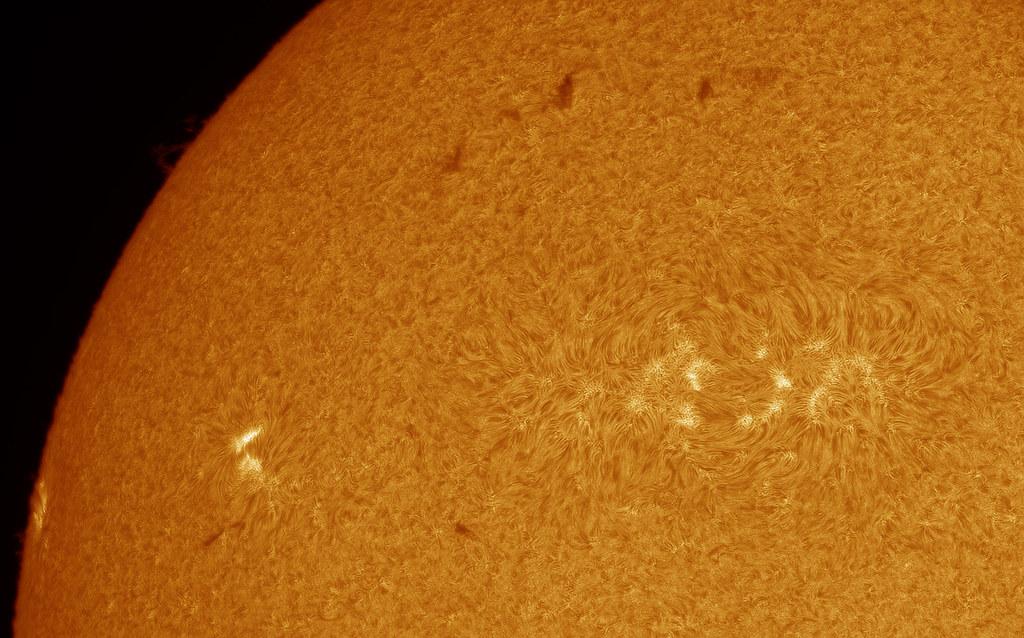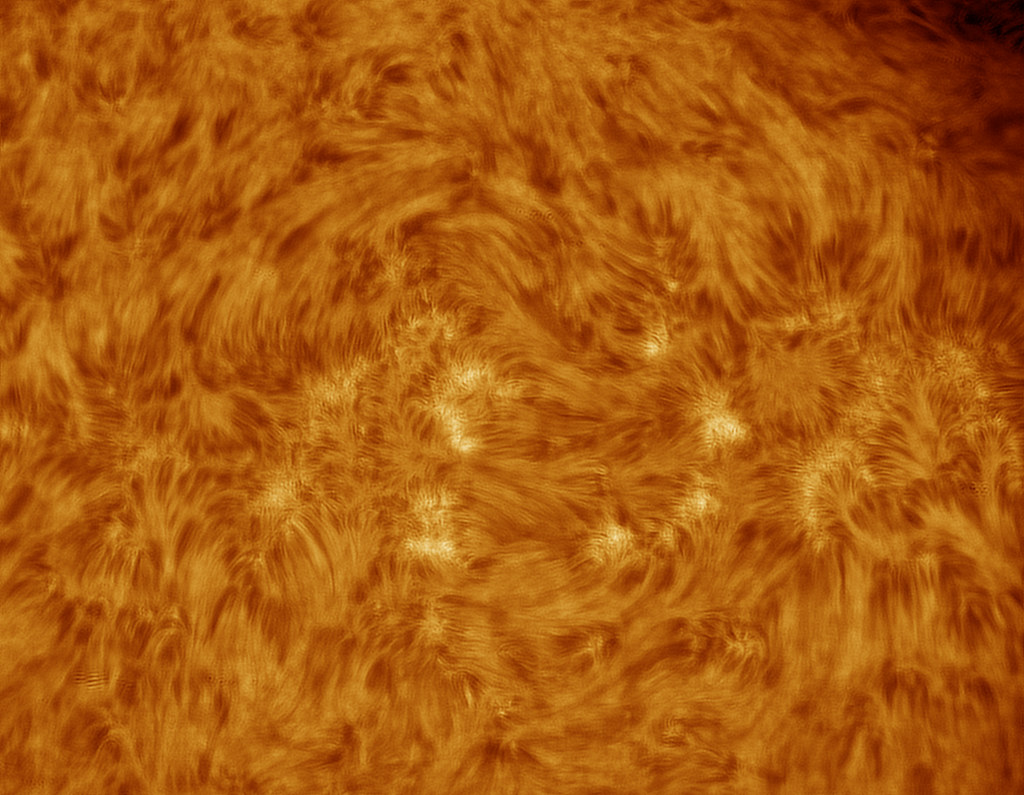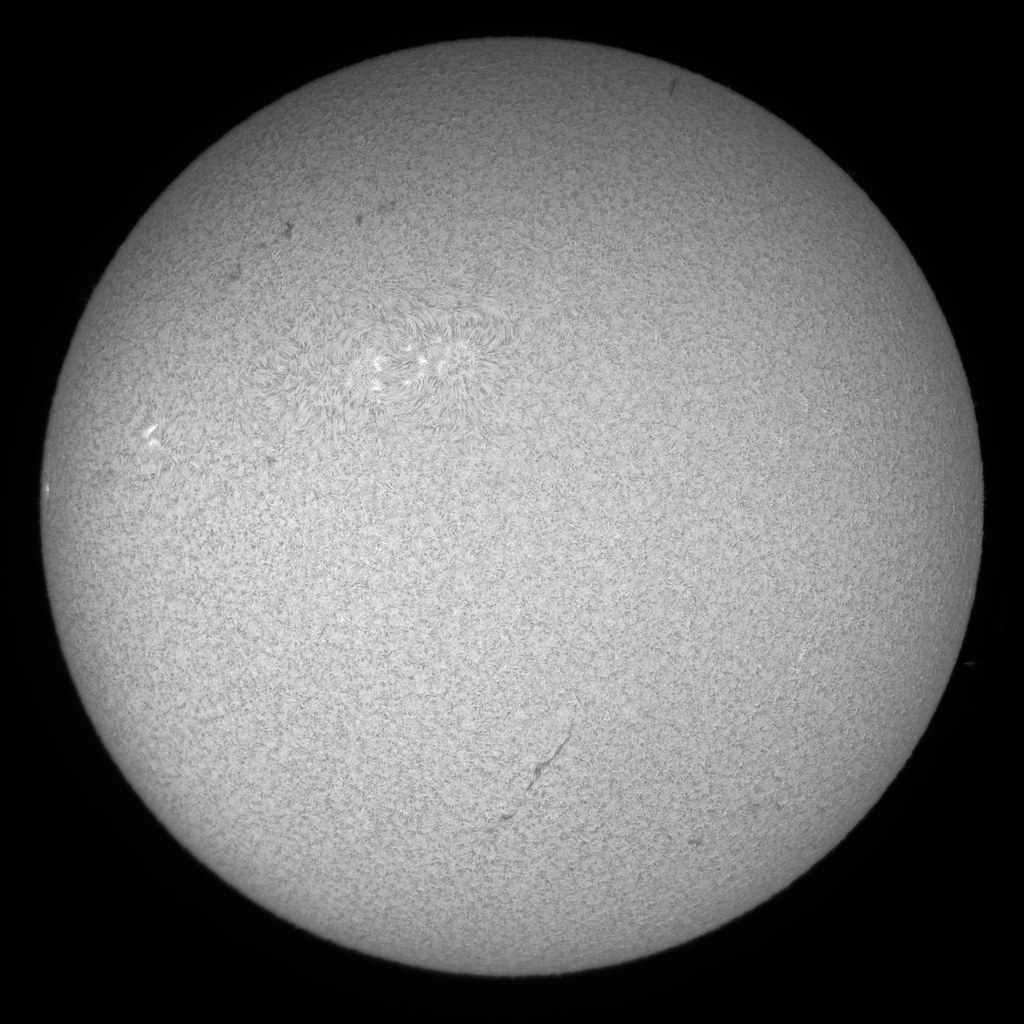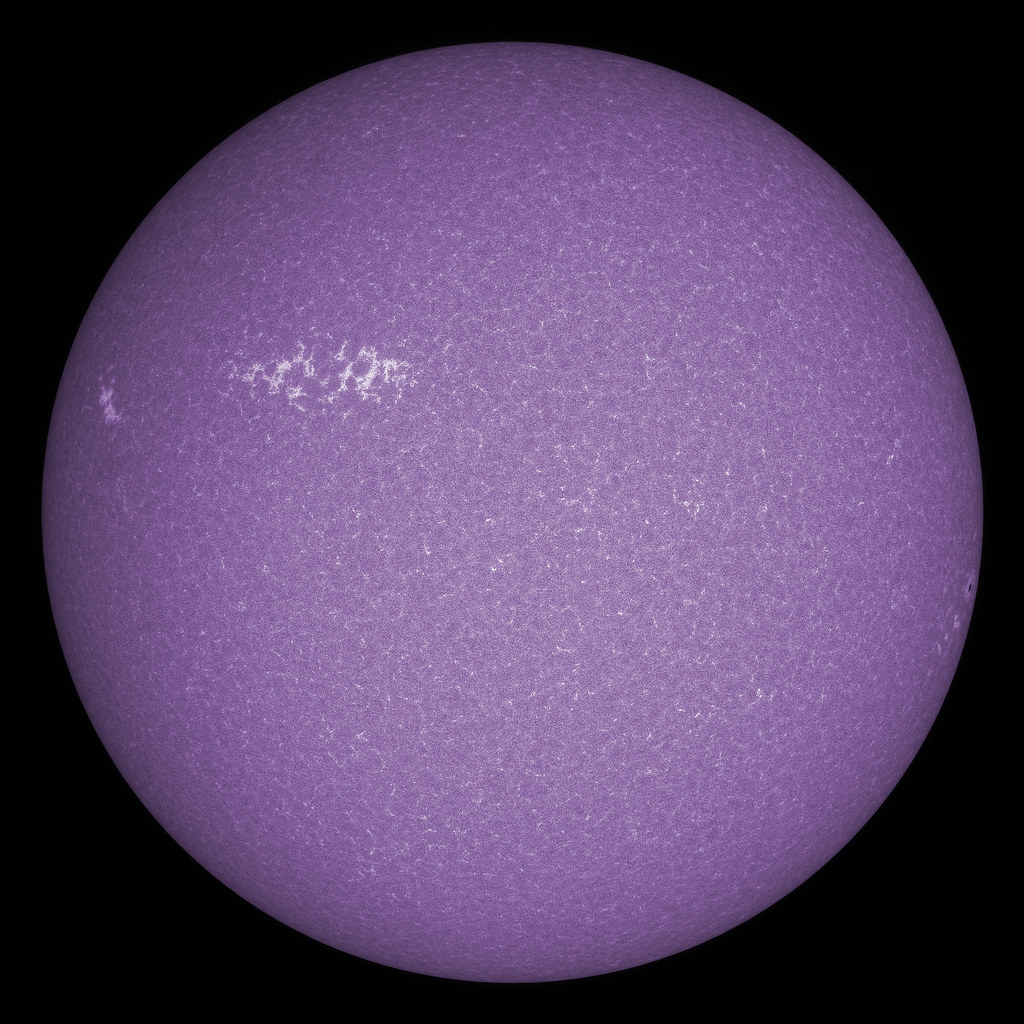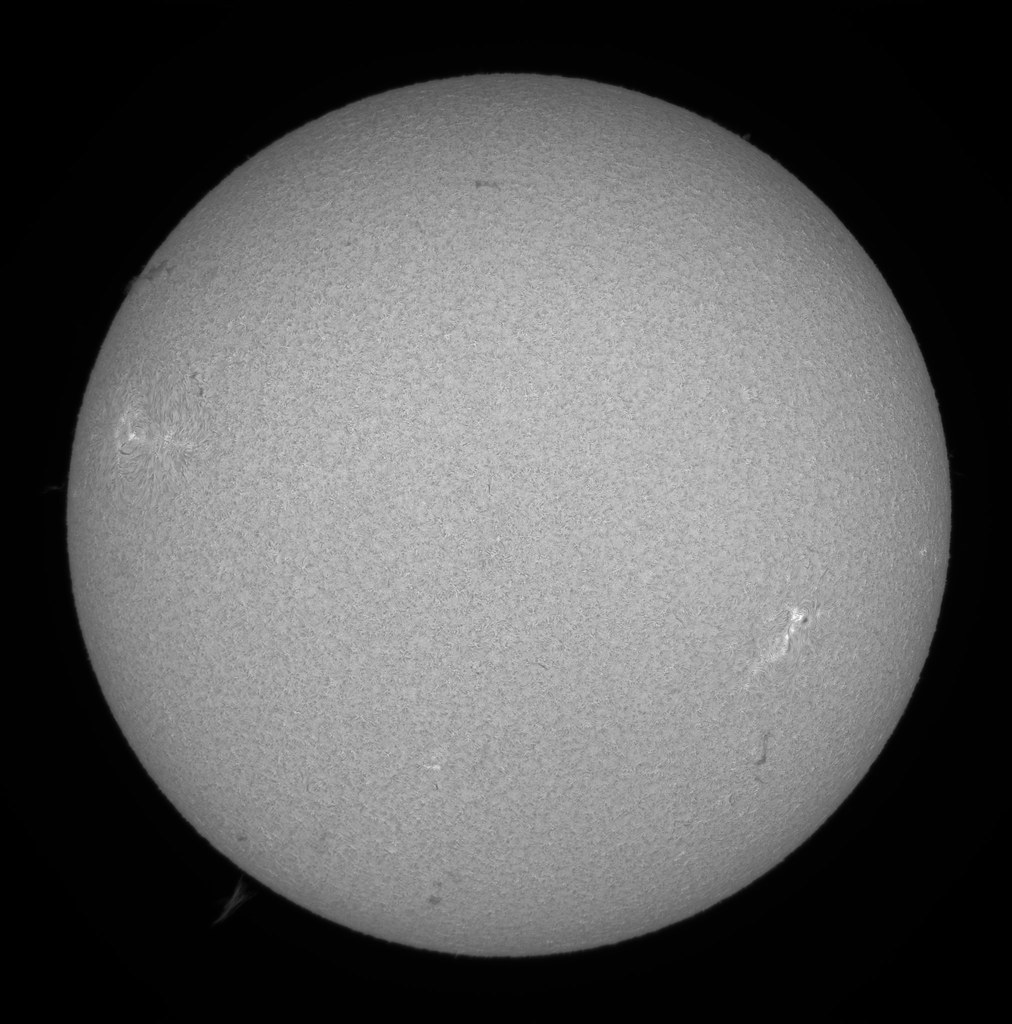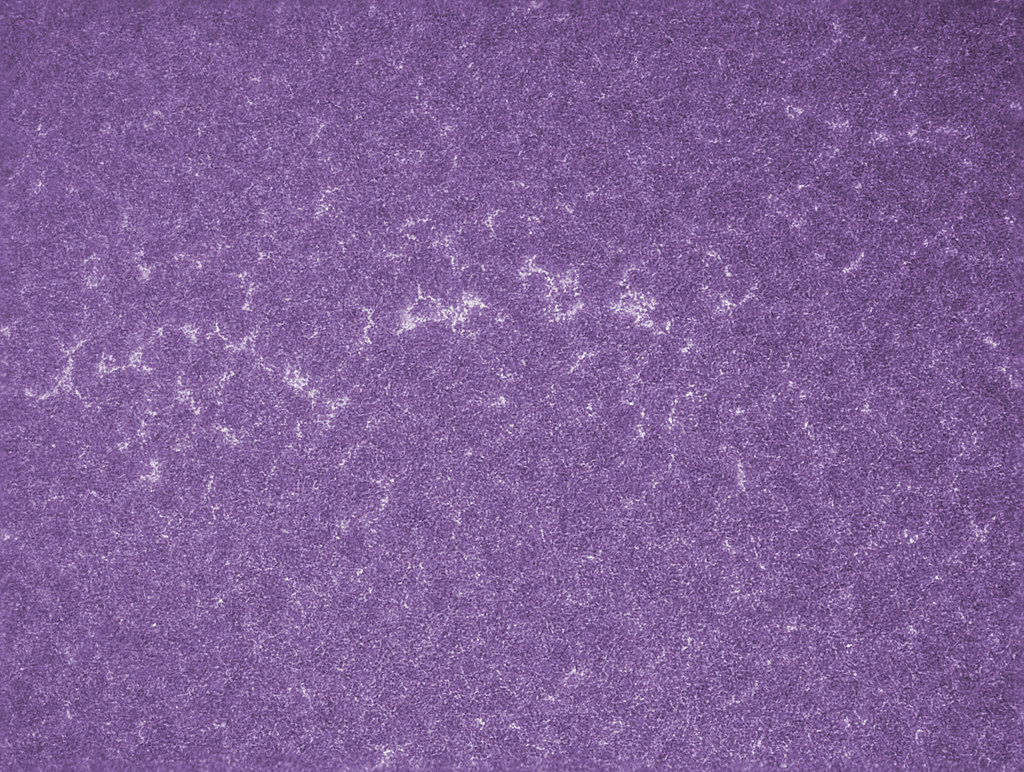
A close up of the region of cycle 25 plage taken with the 100mm Tal Refractor at f28, using the Airylab telecentric, homebrew CaK filter and the FLIR IMX174 camera. The seeing was just on the limit for the aperture used and I had to take a lot of frames to get a usable image from them out of the other end.




